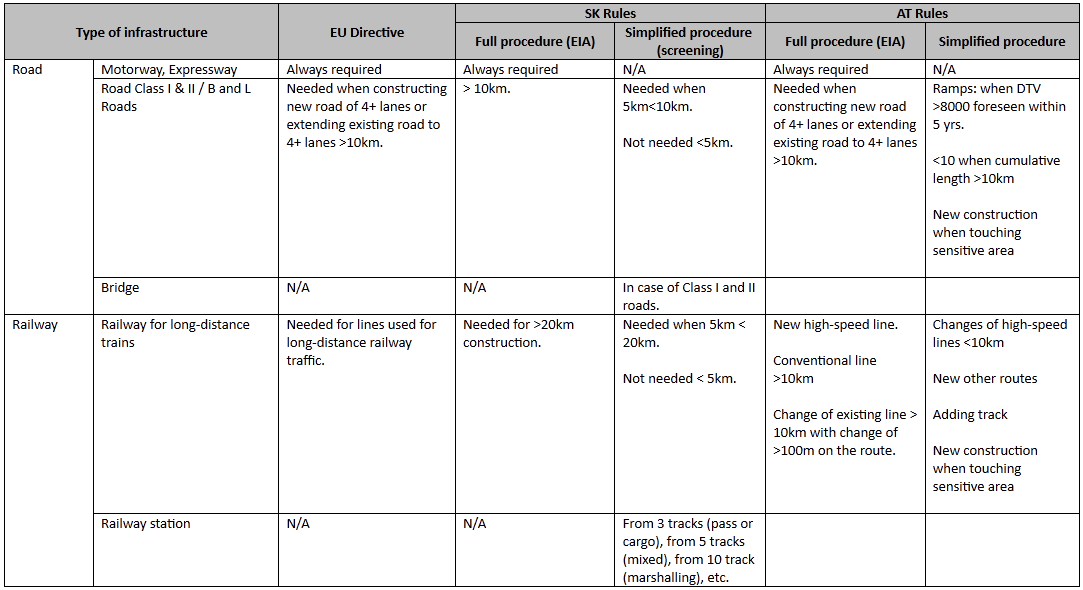Comparison of EIA requirements in Slovakia and Austria is summarized in table below.

Environmental Impact Assessment (EIA) (Slovak Republic)
Environmental Impact Assessment (EIA) of transboundary activities is under the competence of the Ministry of Environment of the Slovak republic. This assessment is in accordance with generally binding legal regulations and related laws (as at November 2014): Act No. 24/2006 Coll. about Environmental Impact Assessment and Regulation of the Ministry of Environment No. 113/2006 Coll., laying down details for the Environmental Impact Assessment.
Details of the EIA transboundary activities may be modified in bilateral agreements. Agreement between Government of the Slovak republic and the Government of Austria implementing Convention on environmental impact assessment in a transboundary context (Espoo Convention) (in force since 2/2005).
Subjects to assessment of the transboundary impact are:
- Strategic documents drafted in the Slovak Republic, which may have a significant impact on the environment that goes beyond national boundaries,
- Actions proposed in the SR and proposed activities that may have a significant impact on the environment that goes beyond national boundaries,
- Strategic documents and proposed actions specified in the preceding paragraphs, if requested by the party concerned,
- Strategic documents and proposed activities carried out in another country, which may have a significant impact on the environment of the Slovak Republic.
On the basis of these laws are subject environment impact assessment following construction activities related to transport:
- motorways and expressways, including objects (without any limit),
- roads I. and II. Classes and alteration or extension of existing roads I and II. associated with the change of category (from 10 km length),
- railway construction of overhead and underground (from 20 km length).
On the basis of these laws are subject screening following construction activities related to transport:
- roads I. and II. classes and alteration or extension of existing roads I and II. associated with the change of category (from 5 to 10 km length),
- railway construction of overhead and underground (from 5 to 20 km length),
- railway stations, terminals (passenger or cargo – from 3 track, mixed (passenger and cargo) – from 5 track, marshalling – 10 track, frontier crossing – 5 track),
- locomotive and carriage depot (from 6 standing),
- construction of road bridges (on roads I. and II. classes) and railway bridges (without any limit), …


